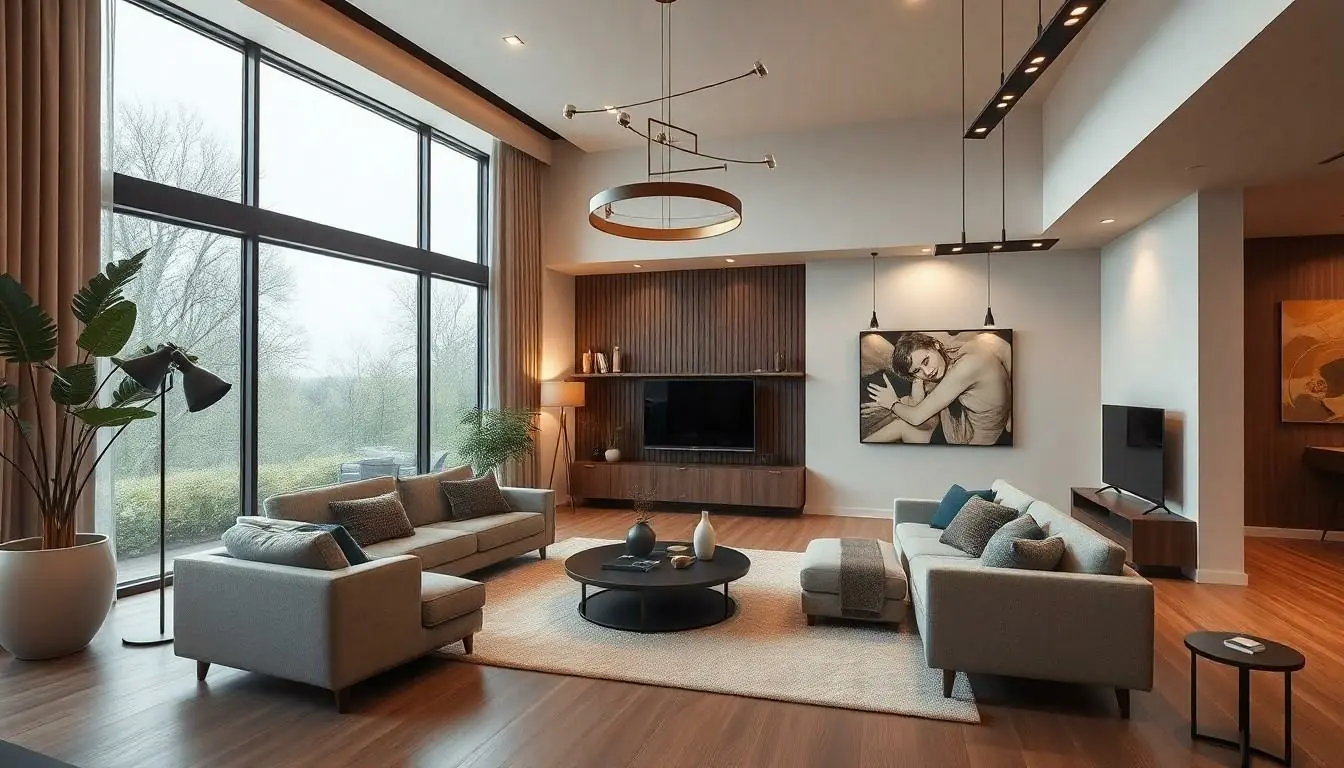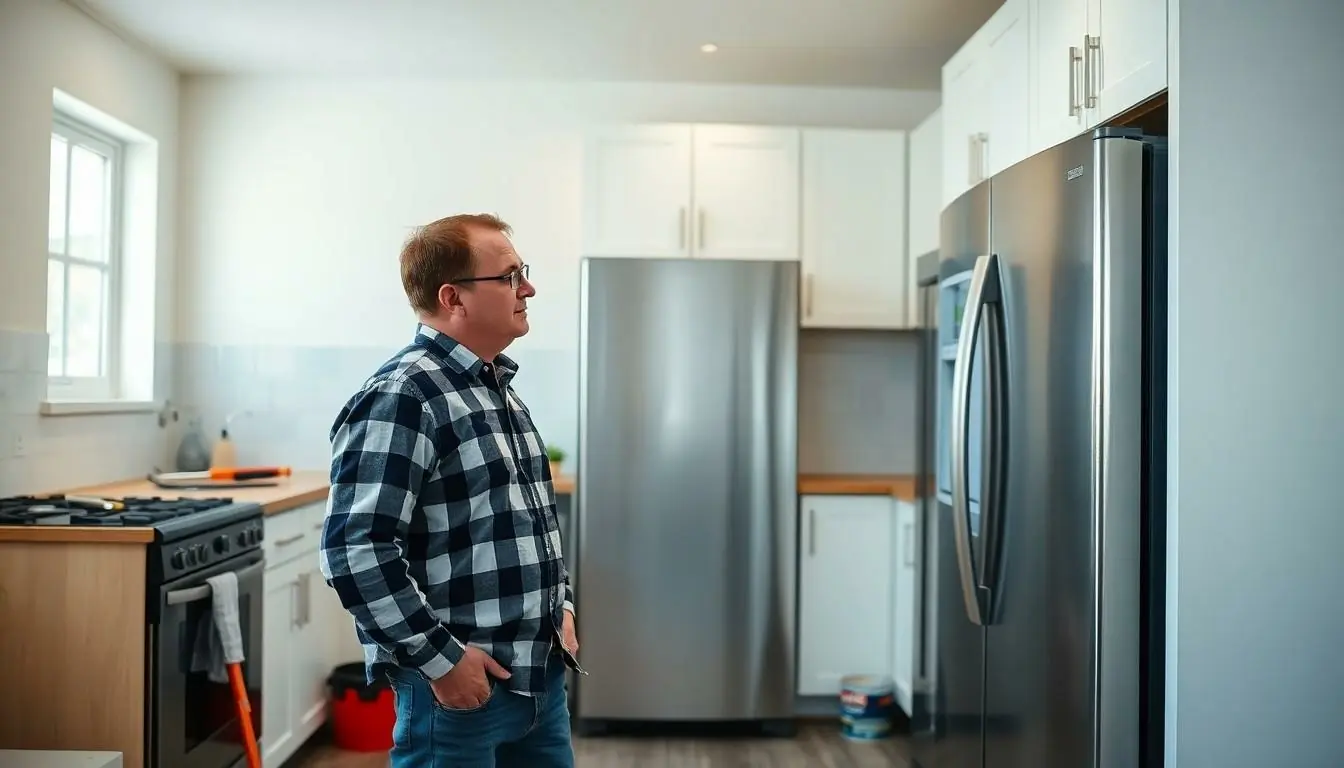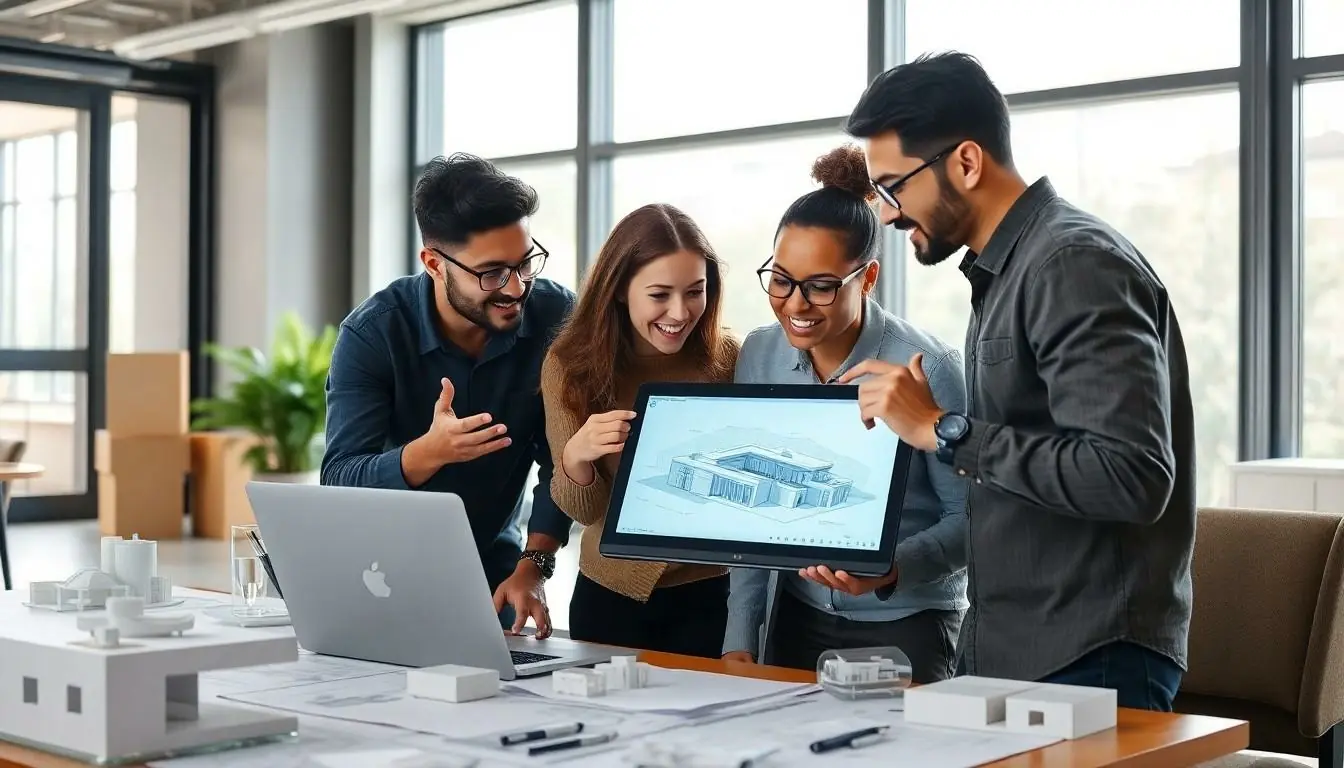Table of Contents
ToggleIn a world where first impressions matter, the spaces we inhabit speak volumes about who we are. Interior design and architecture aren’t just about aesthetics; they’re about creating environments that reflect personality, foster creativity, and sometimes, even spark joy—like finding that last slice of pizza in the fridge.
Overview of Interior Design and Architecture
Interior design and architecture encompass more than visual appeal. These disciplines integrate functionality and aesthetics to enhance living and working spaces. Architects focus on the structural integrity and overall layout of buildings. Designers, on the other hand, curate the interior environment, selecting colors, materials, and furnishings.
Both fields significantly impact how environments reflect individual personality. Spaces can evoke emotions and stimulate creativity through intentional design choices. For example, open layouts promote collaboration in workplaces, while cozy nooks can provide comfort in homes. Each detail contributes to the overall atmosphere, fostering a sense of belonging or inspiration.
Collaboration between architects and designers often results in cohesive projects. In these partnerships, architects provide the framework, while designers refine the user experience. Combining expertise ensures that both aesthetic and functional goals align. Educational programs emphasize the importance of this synergy, preparing professionals to create holistic solutions.
Sustainability plays a vital role in contemporary design and architecture. Designers utilize eco-friendly materials, and architects incorporate energy-efficient systems. These choices not only benefit the environment but also enhance the appeal of properties. Innovations, such as green roofs and smart technology, reflect a growing awareness of environmental responsibility.
Trends continually evolve within interior design and architecture. Emerging styles often blend different cultural influences and historical elements. Staying aware of these shifts allows professionals to provide fresh, relevant designs. As new challenges arise, adaptability becomes essential in maintaining relevance in both fields.
Key Principles of Interior Design

Interior design relies on key principles that guide professionals in their creative processes. Understanding these fundamentals helps create effective and engaging environments.
Functionality and Aesthetics
Functionality and aesthetics play a crucial role in interior design. Spaces must serve their intended purposes without compromising style. Thoughtful layouts enhance user experience and ensure flow between areas. Designers focus on practicality alongside visual appeal, selecting furniture and materials that withstand daily use. For instance, durable upholstery combines comfort with longevity. Engaging designs can create inviting atmospheres that support both work and leisure activities. Ultimately, a well-designed environment fosters productivity and satisfaction for inhabitants.
Color and Light
Color and light significantly influence a space’s mood and perception. Each color evokes different feelings, making the choice of palette essential to design. Designers leverage color theory to create harmony and balance within rooms. Natural light enhances spaces, bringing warmth and vitality. Use of large windows or skylights allows for optimal illumination, highlighting architectural features. Layering artificial light sources adds depth and versatility, adjusting settings for various activities. Intentionally planned lighting creates inviting spaces while showcasing design elements effectively.
Trends in Interior Design and Architecture
The fields of interior design and architecture continually adapt to emerging trends that reflect societal values and technological advancements.
Sustainable Design
Sustainable design emerges as a vital trend, focusing on minimizing environmental impact. Architects and designers prioritize eco-friendly materials, which include reclaimed wood and low-VOC paints. Energy-efficient systems enhance comfort while reducing utility costs. Implementing solar panels and green roofs contributes to sustainability in buildings. It’s essential for professionals to stay informed about certifications like LEED, which promote sustainable practices in construction and design. By embracing sustainability, they not only meet client expectations but also contribute to a healthier planet.
Biophilic Elements
Biophilic design integrates natural elements into built environments, enhancing well-being. Incorporating plants improves air quality and creates a calming atmosphere. Natural light features, such as large windows and skylights, connect indoor spaces to the outdoors. Water elements like fountains or aquariums provide soothing sounds and visual interest. Spaces designed with biophilic principles promote productivity and creativity. The presence of natural materials, such as stone and wood, reinforces this connection, fostering a deeper relationship between occupants and their environments.
The Role of Technology in Design
Technology plays a pivotal role in modern interior design and architecture. It transforms how spaces are conceptualized and experienced.
Smart Homes and Automation
Smart homes revolutionize everyday living. Integrated systems allow individuals to control lighting, heating, and security through smartphones or voice commands. Energy management improves with smart thermostats that adjust based on usage patterns. Appliances can now communicate, enhancing efficiency. A study showed that homes equipped with smart technology experience a 30% reduction in energy costs annually. User-friendly interfaces simplify the adoption of these technologies, promoting widespread acceptance among homeowners.
Virtual Reality in Design
Virtual reality introduces a new dimension to design processes. It enables designers to create immersive experiences that allow clients to explore spaces before construction. Design modifications can occur in real time, minimizing costly changes later. A survey indicated that 60% of clients prefer virtual walkthroughs over traditional design presentations. Virtual reality fosters collaboration by visualizing ideas clearly among architects and clients, enhancing communication. This innovative tool streamlines the design process and increases client satisfaction significantly.
Interior design and architecture are vital in crafting environments that resonate with individuals. They shape experiences that inspire creativity and evoke emotions. As these fields evolve they embrace sustainability and technology, ensuring spaces are not only beautiful but also functional and eco-friendly.
The collaboration between architects and designers remains essential in achieving harmony between aesthetics and practicality. With trends constantly shifting professionals must adapt to maintain relevance. By focusing on intentional design choices and innovative solutions, they create spaces that enhance well-being and foster productivity.
Ultimately the thoughtful integration of design principles paves the way for environments that reflect personality while serving their intended purposes. The future of interior design and architecture promises to be exciting as it continues to evolve with the needs and desires of its inhabitants.







